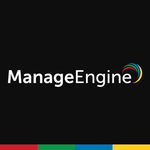What is our primary use case?
We have multiple firewalls in our infrastructure. Palo Alto Networks Panorama serves as the management interface for all our Palo Alto firewalls. As our organization has grown, there has been one company initially, but now three companies have merged into one, and we have increased the number of firewalls. For instance, we have a Palo Alto firewall in our Azure stack and a core firewall from another company that we’ve integrated into our data center. We use Palo Alto Panorama to manage all our Palo Alto firewalls across our infrastructure.
How has it helped my organization?
We have centralized management for all Palo Alto firewalls. With the merger of three companies, each previously operating their own Palo Alto firewalls, we can now manage them efficiently through our operations using Panorama. Our network has become more complex as we run various services, including SD-WAN, across three sites. While the SD-WAN operates through a separate firewall, our core firewall remains Palo Alto. Additionally, we use Palo Alto as a perimeter firewall for our Azure stack. In total, we manage four firewalls with Panorama. We monitor various traffic types, including FTP, browser traffic, applications, and unified threat management. We also have SSL inspection enabled and are actively managing and monitoring SSL tunnels and threat management.
What is most valuable?
Palo Alto Panorama offers robust logging and reporting capabilities, allowing us to extract reports in a user-friendly GUI format with graphical representations. For example, we can track bytes sent and received for specific applications and users since we use Palo Alto XDR for analysis, reporting, and forensics.
We benefit from a certain level of customization in our reports, utilizing predefined templates and tailored reports. This includes user activity reports, application reports, and SaaS platform reports. We forward logs to a separate SIEM solution, enabling us to monitor TCP and inspect SSL traffic.
What needs improvement?
The logs from our virtual appliances show potential for improvement, particularly regarding their deployment in hypervisors like VMware, Proxmox, or Azure Stack. Monitoring the internal traffic between hosts with these hypervisors could be enhanced. While predefined reports are available, we often require customized reports tailored to the specific areas involving hypervisors.
For how long have I used the solution?
I have been using Palo Alto Networks Panorama for five years.
What do I think about the stability of the solution?
We use Palo Alto as a perimeter firewall for our public network, which can support nearly 40,000 users daily. About 7,000 to 10,000 users connect to the Internet through this firewall.
In addition, we utilize Palo Alto Global VPN for remote access. We have around 869 VPN users, primarily for remote work or when a government advisory requires the entire staff to connect. This solution integrates seamlessly with our Palo Alto firewall.
I rate the stability an eight out of ten.
What do I think about the scalability of the solution?
It's important to reference authoritative sources like Gartner. We selected the product based on their ratings and assessments. In terms of capability, Palo Alto remains one of the top solutions for on-premises security, XDRs, and cloud security posture management.
I rate the scalability a nine out of ten.
How are customer service and support?
The support team is very knowledgeable. We only contact them when our partner support or integrated support cannot resolve an issue. They respond quickly, joining within an hour if there’s a critical situation.
How would you rate customer service and support?
How was the initial setup?
We deployed our Palo Alto solution four years ago for the Azure Stack implementation. The complete deployment took around three months, as it's a comprehensive cloud solution similar to Azure or AWS.
If I were to replace my Palo Alto firewall today, I estimate it would take at least seven days to implement. Given our complex infrastructure, which includes SD-WANs and connections between three different data centers into one main center, this timeframe excludes the planning phase.
We are aligned with Palo Alto, as they are our partners. At times, we need to engage Palo Alto support directly due to our subscription with them, which was also established during the initial deployment.
What was our ROI?
Managing multiple firewalls across three large identities was becoming quite challenging. To address this, we implemented Palo Alto Panorama, which allows us to manage all our firewalls from a single interface. This has significantly improved our efficiency and manageability. It also helps us better use our current human resources; otherwise, we would need to hire several experts in Palo Alto to oversee the three data centers, which would be a cumbersome task.
What's my experience with pricing, setup cost, and licensing?
Palo Alto solutions are more expensive than other products, but this often depends on an organization’s specific requirements. The level of security and features needed will influence the decision. For example, VPN access is essential for our corporate users and consultants, as company policy mandates that they connect via VPN to access the corporate network. When purchasing bulk licenses, we receive discounts, which makes the cost comparison with other solutions more favorable.
What other advice do I have?
When it comes to security, complexity often accompanies it. With advancements over time and the integration of AI and new technologies, we're seeing improved features in the GUI compared to some online solutions.
The ongoing improvements with the latest firmware updates are a positive sign. Still, virtual firewalls or appliances face a challenge: They could provide more comprehensive information than what is currently available in the reports.
We also use the VPN functionality, which became crucial during COVID-19. Initially, we had around 610 users, and now that number has risen to about 890 users who connect remotely through Palo Alto GlobalProtect VPN. We've never considered switching to another solution because it is stable and reliable for our needs.
You encounter news about zero-day vulnerabilities and firewall firmware updates when browsing the internet. We've been using our Palo Alto solution for the past four years, and during this time, some devices were procured five years ago, while others, including our Palo Alto firewall, were acquired around three years ago. Each identity had IT staff coordinating individual updates, which was inefficient. Now, with a unified approach through Panorama, we can monitor and manage zero-day vulnerabilities more effectively. Panorama plays a crucial role in ensuring timely updates. The features we utilize depend on the complexity of our network and the number of applications hosted in our environment.
Suppose your infrastructure is extensive, and you need a reliable, secure SDR, UTM, and firewall solution. In that case, choosing a product with comprehensive capabilities that you can rely on for at least the next five years is crucial. Proper planning is essential; if you purchase something that isn’t reliable or only plan for six months to a year, it may not be appropriate for your needs. Palo Alto is one of the best secure solutions for organizations with complex infrastructures, such as multiple sites in different regions.
Overall, I rate the solution a nine-point five out of ten.
Which deployment model are you using for this solution?
On-premises
Disclosure: My company does not have a business relationship with this vendor other than being a customer.
















